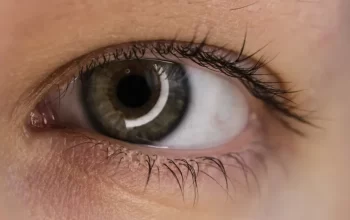Lifestyle diseases are on a rise. One such disease, diabetes, is a serious problem in the world. Millions are diagnosed every year with diabetes all over the globe. It is crucial that you do everything possible to reverse diabetes and live healthy lives. Diabetes refers to the body’s inability to regulate the glucose levels in the blood. This is when the body’s sugar metabolism is out of balance. The food gets broken down, and the glucose is released into our bodies to be used as energy. Glucose constitutes the most common form of sugar found in the body. The beta cells within the pancreas secrete insulin simultaneously. The pancreas can be described as a long, thin organ found behind the stomach. It is located against the back. Insulin transports glucose into the cells. This restores blood sugar to normal levels. The cells use glucose to make energy. If insulin is not produced or used efficiently by the pancreas, blood sugar levels may rise.
Type-1 diabetics are those who have low insulin levels. Regular insulin injections are required for the survival of type-1 diabetes. It can start in childhood but may develop at any age. It is most common before 40. Type-2 Diabetes is the most common type. It’s caused by obesity and genetic tendency. This type of diabetes causes the body to produce normal or even greater levels of insulin. However, there are certain factors that make insulin ineffective. This type can be caused by poor diet, obesity and sedentary behavior. It’s most common in adults. However, it can also affect obese adolescents. The type and duration of diabetes can affect the severity of these symptoms. The most common symptoms of diabetes include increased thirst, excessive hunger and increased urination. Other symptoms include fatigue and blurred vision, skin infection, which can be fungal/bacterial, weight loss and slow healing of wounds. There’s a chance that you will lose weight if your insulin levels are lower.
Although diabetes can sometimes be managed successfully, it cannot necessarily be treated. All types can be managed with blood glucose control, blood pressure, and cholesterol levels that are as normal as possible. The combination of certain healthy steps discussed above can help improve well-being while protecting against long-term issues. Talking to a healthcare professional is the first step. They can help you better understand diabetes and the medications required. A healthcare professional will help guide you in understanding how to take the right medication at the right time. You will also need work to improve your lifestyle. This is a complicated part. You can’t change your lifestyle in one day. To see changes, you’ll have to implement small ones. These changes will not happen overnight so you must stay consistent. Be realistic and focus on what you are capable of doing. Then, start to eat healthier foods. You should eat lots of fruits & vegetables. Reduce the amount you eat of carbs and eat frequently. Moving is the third thing. You should exercise at least five days each week. Try to get at least 30 minutes of activity per day. If you are overweight, then try to shed 10 to 20 lbs. Monitor your blood sugar levels. Check your eyes and feet. Recognize the reasons your blood sugar levels have changed and how you can treat them. A regular checkup of your eyes, feet, teeth, and ears is the fifth step. Your doctor should be consulted regularly for more detailed tests and checkups. The sixth step in the process is to ask for or receive support from your family, friends and diabetes care staff. Type-2 diabetes is associated with stress. Reduce stress by practicing relaxation techniques. Healthy sleeping patterns are key to diabetes cure. So make sure you get good sleep.
Like many other diseases, lifestyle plays a major role in the development of diabetes. The risk of developing diabetes is increased by eating junk food, which often contains sugary ingredients or additives. Sugary foods, food high in trans fats, cold drinks and packaged snacks, french fries, sweetened beverages, sugary foods and juices can all contribute to diabetes. Smoking is a major contributor to poor blood sugar control. It can also cause eye diseases, heart disease and stroke. Your blood sugar can fluctuate depending on how much you drink. It is best to reduce alcohol consumption. Insulin users and diabetics should also be aware that alcohol abuse can result in low blood sugar later.
A healthy lifestyle and healthy diet can help you manage diabetes. If you combine this with regular health checkups as well as medication, you’ll be on the right track for managing diabetes. By taking small steps now, you can ensure better health in your future.




